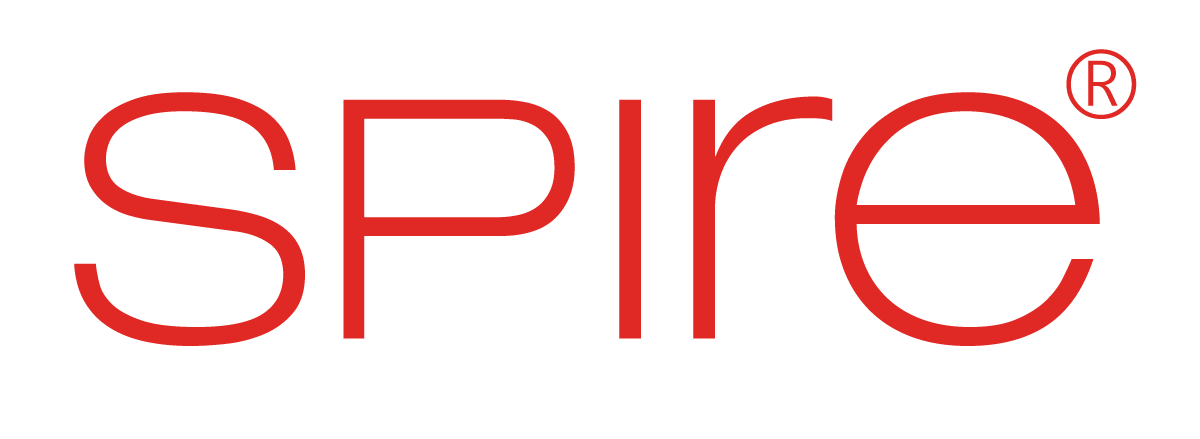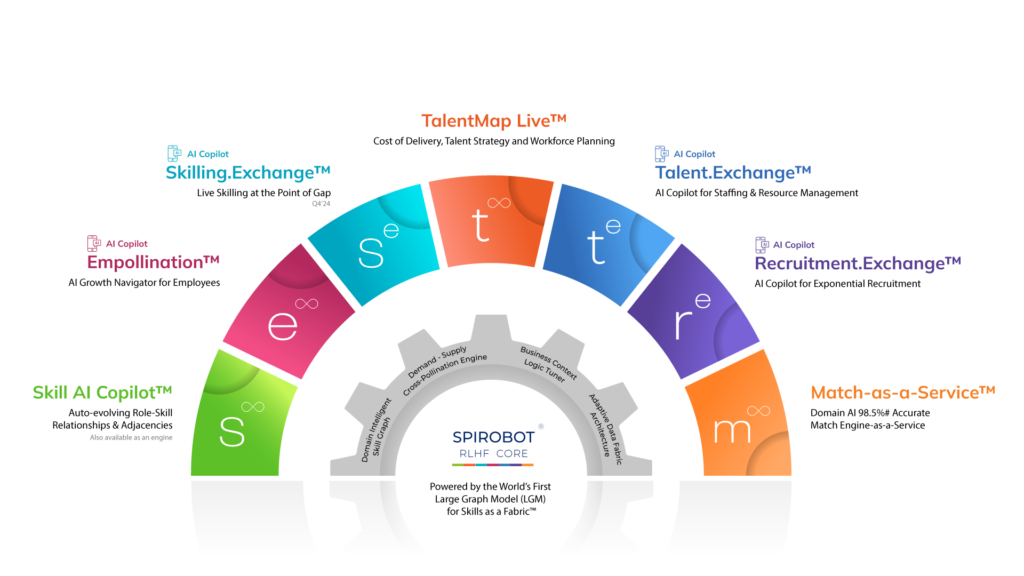Across every industry, from manufacturing to healthcare, finance to IT, leaders are sounding the alarm on a now-familiar refrain: “We can’t find the skills we need.” Headlines cite a growing skill shortage; recruitment teams scramble for candidates, and L&D budgets swell in response. But what if the crisis isn’t just about missing skills?
What if it’s about misaligned skills? In many cases, the problem isn’t that companies don’t have talent, they just don’t see it. Beneath the surface of the skill shortage is a more complex, solvable issue: a knowledge gap between what roles need and what internal talent is already capable of doing. Bridging that gap demands more than hiring; it requires intelligent skill matching.
This blog explores how organizations can shift their approach, from trying to “buy” skills in the market to intelligently matching internal capabilities to evolving business needs.
The Myth of the Skill Shortage: It’s Not Always Out There
There’s no question that demand for skills is rising. According to the World Economic Forum’s 2023 Future of Jobs report, 44% of workers’ skills are expected to change within five years, driven by digital transformation, AI adoption, and the evolving nature of work.
But many organizations misinterpret this shift. They assume the only way to fill the gap is to hire externally, contributing to a costly, competitive talent race.
Here’s why that’s a flawed assumption:
- Many employees have adjacent or evolving skills that don’t match neatly to their current job titles
- Static job architectures and outdated HR systems hide internal capability
- Traditional assessments often fail to contextualize skills by domain, use-case, or business need
- The time and cost of external hiring increases while internal capability sits idle
The result? A perceived skill shortage that’s actually a skill visibility problem.
In fact, McKinsey’s 2024 Workforce Strategy survey found that 63% of companies say their biggest obstacle to closing talent gaps is the inability to accurately identify and match internal skills, not the lack of skills themselves.
Why Intelligent Skill Matching is the Strategic Lever Most Organizations Are Missing
Closing talent gaps is often treated as a hiring problem, but in reality, it’s a matching problem. The disconnect between business needs and workforce capability usually stems from outdated assumptions, incomplete data, and surface-level assessments. The missing link isn’t more talent – it’s the inability to intelligently align skills with evolving role requirements.
This is where skill matching becomes indispensable.
Done well, skill matching is the ability to:
- See beyond job titles and surface credentials
- Understand real proficiency and context of skill application
- Connect internal capabilities to business needs before turning to external hiring
But here’s the challenge: traditional matching methods are no longer fit for purpose.
Most organizations still rely on:
- Static resumes or CVs that reflect the past, not the present
- Keyword-based searches that miss nuance and domain context
- Rigid job descriptions that fail to account for evolving or hybrid roles
- Manual talent reviews driven by gut feel rather than data
The result? Organizations miss out on high-potential internal talent, duplicate skills across functions, and continue to experience perceived shortages, when in fact, the capability exists, but it’s not being surfaced or mobilized.
According to the 2024 Mercer Global Talent Trends Report, only 32% of organizations believe they can effectively identify skills across their workforce, and even fewer are confident in matching those skills to open opportunities.
This is a critical failure not of workforce capability, but of workforce visibility and orchestration.
When skill matching is intelligent, contextual, and continuously updated, it enables companies to:
- Accelerate internal mobility
- Reduce unnecessary hiring
- Strengthen project delivery through better team composition
- Deploy learning resources where they’ll actually move the needle
It becomes a strategic lever, not just a talent function.
Why Traditional Matching Falls Short
In most organizations, the process of matching people to roles or projects still relies on outdated tools and assumptions. Despite advancements in HR tech, traditional skill matching is largely transactional, disconnected from business context, and blind to how capabilities evolve in real time.
Intelligent Skill Matching vs. Traditional Tools
|
Criteria |
Traditional Matching |
Intelligent Matching |
|
Skill Source |
Static resumes |
Real-time work and learning data |
|
Matching Basis |
Keywords and titles |
Proficiency + context + recency |
|
Role Understanding |
Generic frameworks |
Domain-specific modeling |
|
Proficiency Assessment |
Absent or binary |
Continuously scored |
|
Internal Talent Visibility |
Low |
High |
Here’s where it breaks down:
1. Reliance on Resumes and Job Titles
Resumes are static snapshots of the past, not indicators of present proficiency or future potential. They tell you what someone did, but not how well they did it, in what context, or whether those skills are still current.
Job titles are equally misleading. A “Business Analyst” in one team may have deep automation skills, while another may be focused on stakeholder management. Yet traditional systems match both to the same generic role.
This results in mismatches, overlooked internal talent, and poor hiring outcomes.
2. Shallow, Keyword-Based Matching
Most talent systems still rely on keyword matching algorithms, essentially comparing strings of text between job descriptions and résumés. This approach lacks the ability to interpret:
- Skill proficiency levels
- Application depth and complexity
- Adjacency or learning velocity
- Domain-specific nuances
For example, two employees may list “Python” as a skill but only one is applying it in production systems under compliance constraints. Keyword matching treats them as equal; intelligent matching doesn’t.
3. Static Role Templates and Competency Frameworks
Many organizations use fixed competency frameworks or job architecture models that haven’t been updated in years. As a result, they:
- Don’t reflect emerging or hybrid roles (e.g., AI Ops Manager, Sustainability Data Analyst)
- Fail to capture skills applied in non-traditional paths
- Reinforce linear career progression models that limit lateral moves
These outdated structures suppress mobility and force recruiters to look externally even when capability exists internally.
4. Manual Reviews and Gut-Based Decisions
HR business partners and line managers often make decisions based on familiarity, not data. Without skill intelligence:
- Internal promotions go to “known quantities,” not the best fit
- Talent assessments are biased by recency, visibility, or interpersonal proximity
- Cross-functional movement becomes rare because capabilities aren’t visible beyond the team
This perpetuates talent hoarding and slows down role fulfillment across the organization.
The Business Cost of Outdated Matching
When skill matching fails, organizations pay in multiple ways:
- Higher external hiring costs due to underutilized internal capability
- Longer time-to-fill as teams search for non-existent unicorns
- Missed reskilling opportunities where employees could transition with minor training
- Increased attrition when employees feel invisible or stagnant
According to Deloitte’s 2023 Human Capital Trends report, only 18% of organizations say their employees can easily find and apply for internal roles. That’s a systemic failure of matching infrastructure, not employee ambition.
The Bottom Line?
Traditional matching tools are rule-based, reactive, and blind to real context. They can’t keep up with the speed at which skills evolve or roles shift. They lack the intelligence to infer capability, measure proficiency, or map transferable skills across functions.
To solve today’s talent gaps, organizations need dynamic, context-aware, and continuously learning systems that reflect the true state of their workforce.
Shifting the Mindset: From Shortage to Shift
Rather than viewing the problem as a skills deficit, leading organizations are reframing it as a skills shift:
- Shift in demand: Roles are evolving, requiring new configurations of existing skills
- Shift in capability: Employees are upskilling or applying existing skills in new domains
- Shift in strategy: From reactive hiring to proactive internal mobility and reskilling
This mindset opens the door to solving the problem differently. Instead of competing for external talent, companies can tap into their internal skill ecosystem if they have the right tools to see and match it.
Spire.AI: Solving the Skill Matching Challenge with Contextual Intelligence
Spire.AI Copilot for Talent is built to close the gap between talent supply and role demand by enabling precise, real-time skill matching across the organization.
It does this through three interlocking capabilities:
Live Skill Inference and Profiling
Spire.AI continuously captures skill signals from real-world work outputs, learning systems, and business context, not just static profiles. It uses a Large Graph Model (LGM) for Skills trained on domain-specific data to infer:
- What skills employees actually use
- How proficient they are in applying them
- How those skills are evolving over time
This creates validated, live skill profiles that reflect the true state of workforce capability without requiring manual updates.
Contextual Skill-Role Mapping
Spire.AI doesn’t just match skills to job titles; it maps skills to the work that needs to be done.
That means:
- Understanding the domain-specific application of a skill (e.g., AI in clinical workflows vs. customer support automation)
- Inferring adjacent skills that signal readiness for emerging roles
- Matching based on proficiency, recency, and collaborative performance
This ensures precision alignment between role needs and individual capability even when the title or résumé doesn’t make it obvious.
Actionable Insights and Recommendations
Spire.AI powers dashboards and recommendation engines that allow:
- Talent teams to find internal matches for open roles in minutes
- Business leaders to identify team-level skill gaps and reallocate talent
- L&D teams to personalize reskilling journeys based on live proficiency scores
These tools move skill matching out of HR silos and into strategic decision-making where it belongs.
Case Study: Accelerating Role Fulfillment in a Global Services Firm
A global BPO and technology services company struggled with high vacancy rates for hybrid tech-support roles requiring both technical knowledge and client communication skills.
By deploying Spire.AI, the company:
- Mapped skills of over 30,000 employees across 15 countries
- Identified 2,800 employees with underutilized adjacent skills (e.g., customer service reps with growing digital tool fluency)
- Used Spire.AI’s role matching engine to fill 63% of open roles internally within 45 days
More importantly, employees who transitioned internally stayed 2.2X longer than external hires and hit productivity benchmarks 21% faster.
Bridging the Knowledge Gap: A New Role for Skill Intelligence
The knowledge gap – the disconnect between what employees know and what employers understand about those capabilities is now one of the largest barriers to workforce agility.
Spire.AI closes this gap by:
- Making invisible skills visible
- Linking capabilities to real business context
- Enabling redeployment before the need to rehire arises
This creates a closed-loop workforce strategy where:
- Skills are continuously mapped
- Role needs are dynamically modeled
- Talent decisions are grounded in real-time intelligence
Strategic Benefits of Intelligent Skill Matching
Enterprises that adopt contextual skill-role mapping see measurable improvements across multiple dimensions:
|
Benefit |
Outcome |
|
Faster Role Fulfillment |
Reduce time-to-fill by 30–50% |
|
Higher Internal Mobility |
Increase redeployments by 2–3X |
|
Better Retention |
Internal hires are up to 2X more likely to stay |
|
Lower Hiring Costs |
Reduce external hiring spend by 20–40% |
|
Smarter L&D Investments |
Personalized reskilling based on actual gaps |
These are not theoretical gains; they’re already being realized by organizations deploying skill intelligence systems like Spire.AI.
Getting Started: A Roadmap to Smarter Skill Matching
Here’s how organizations can start shifting from “skill shortage” panic to skill shift strategy:
1. Centralize and Modernize Skill Data
- Consolidate disparate skills data from HRIS, LMS, project management, and performance systems
- Replace static taxonomies with dynamic, domain-aware skill libraries
2. Implement Contextual Skill Inference
- Use tools like Spire.AI to infer, validate, and update skill profiles continuously
- Move beyond self-assessments and static resumes
3. Map Evolving Role Needs
- Break roles into capabilities, not just job descriptions
- Identify critical skills that are adjacent or emerging
4. Embed Skill Matching into Talent Workflows
- Integrate into succession planning, workforce forecasting, and project staffing
- Empower managers to access talent recommendations based on capability, not title
5. Measure and Iterate
- Track mobility velocity, skill gap closure, and redeployment rates
- Use insights to fine-tune hiring, L&D, and org design decisions
Conclusion: The Future Isn’t Short on Skills, It’s Short on Visibility
The narrative around skill shortages is shifting. Smart organizations are realizing that the challenge isn’t always about lacking talent; it’s about knowing how to unlock and apply the talent they already have.
By moving from rigid, title-based structures to dynamic, skill-based systems, enterprises can fill roles faster, retain people longer, and adapt to change with confidence.
Spire.AI makes this transformation possible. With live skill inference, contextual role mapping, and intelligent matching, it closes the loop between workforce capability and business needs, turning the “shortage” into a strategic advantage.







